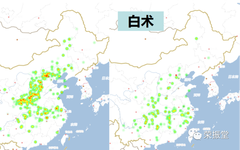【Properties】Taste: Spicy; Bitter; Nature: Warm
【Meridians】Enters the Spleen; Stomach; Liver meridians
(Pure music, Gusu Lan family)
Today, let us get to know the dampness-transforming herb “Cang Zhu (Atractylodes)”. In discussing this, it is unavoidable to mention Bai Zhu (White Atractylodes) as well. Cang Zhu and Bai Zhu are like two brothers, belonging to the same family and genus, with overlapping habitats, both used medicinally for their roots, yet they have different “personalities”.

(Image from Plant Intelligence, Baidu provides visual mapping)
In traditional Chinese medicine (TCM) prescriptions, Cang Zhu is frequently used, and most doctors are aware that both herbs are categorized as dampness-transforming and Spleen-strengthening medicines. According to ancient texts, Bai Zhu and Cang Zhu were referred to as “Zhu” in the Shen Nong Ben Cao Jing (Shen Nong’s Classic of Materia Medica), classified as superior herbs, but there was no distinction made between Bai Zhu and Cang Zhu until the Southern and Northern Dynasties, when Tao Hongjing began to differentiate them in the Ben Cao Jing Ji Zhu (Commentary on the Classic of Materia Medica).
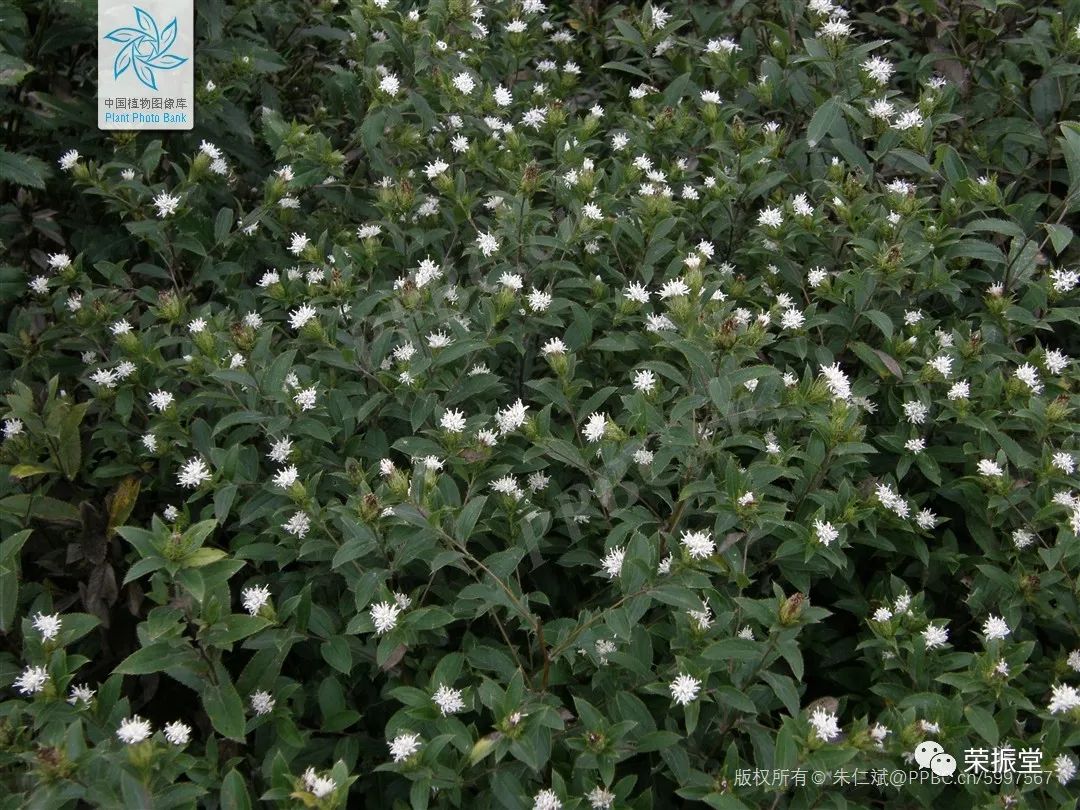
(Image from PPBC, Zhu Renbin photographed Cang Zhu flowers)
Cang Zhu in TCM texts is known for its ability to dry dampness, strengthen the Spleen, dispel wind-dampness, and improve vision. It is primarily used to treat symptoms related to dampness obstructing the Spleen and Stomach, such as fatigue, excessive sleepiness, abdominal distension, poor appetite, vomiting, and diarrhea; it can also address phlegm, damp swelling, exterior syndromes with dampness, heavy pain in the head and body, and joint pain; it is effective for treating bi syndrome (associated with warmth) and night blindness.
Now, let’s set aside the previous understanding and re-examine Cang Zhu!
If you are still unclear about how to analyze TCM herbs, please refer to the previous articles:
Imagination One: Why Can Plants Be Used as Medicine
Theory Two: Plant Adaptation to the Environment
Interesting Three: The Impact of Harvest Time and Parts on Medicinal Properties
Conclusion Four: The Art of Processing Chinese Medicine
Cang Zhu’s Ecological Characteristics
KNOWING LIFE
Cang Zhu is a perennial herb belonging to the Asteraceae family, reaching heights of 30-100 cm, growing singly or in small clusters. Its wild habitat is found in grasslands, under forests, in shrubs, and in rock crevices at altitudes of 200-800 meters. In China, its distribution can be seen on the aforementioned Baidu map, while it is also found in North Korea and the Russian Far East.
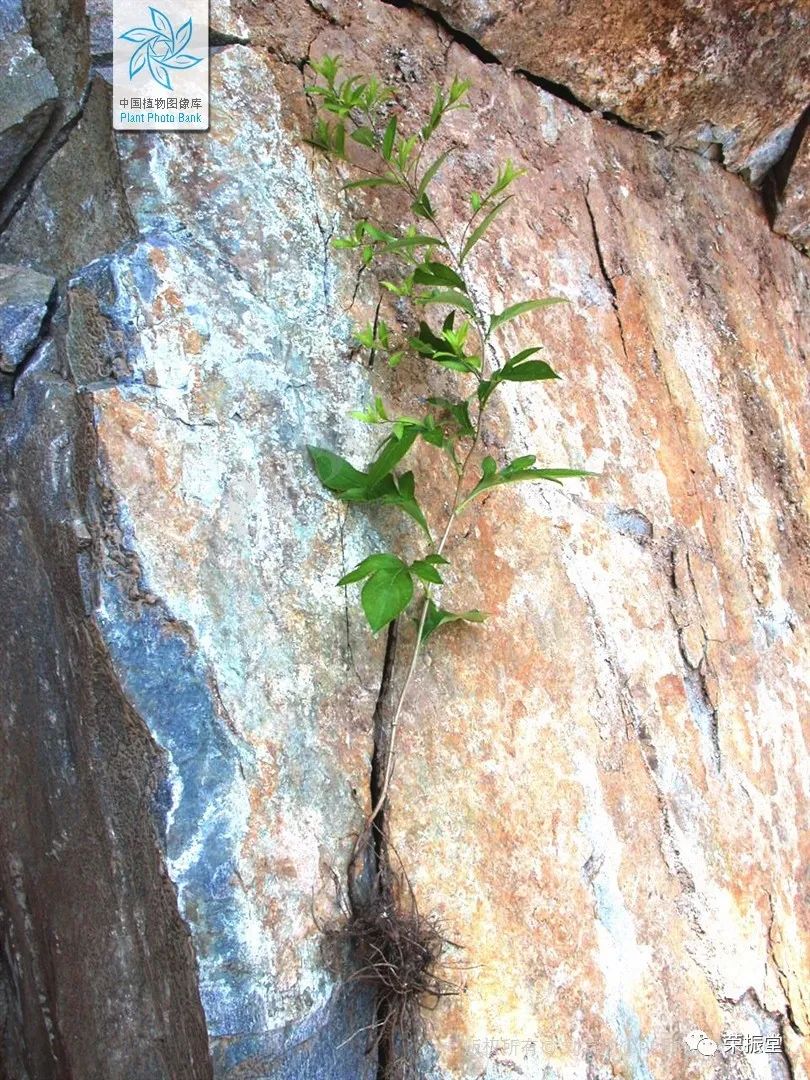
(Image from PPBC, Liu Zongcai photographed)
In northern regions, the above-ground parts wither in winter, while those in southern regions do not easily wither.
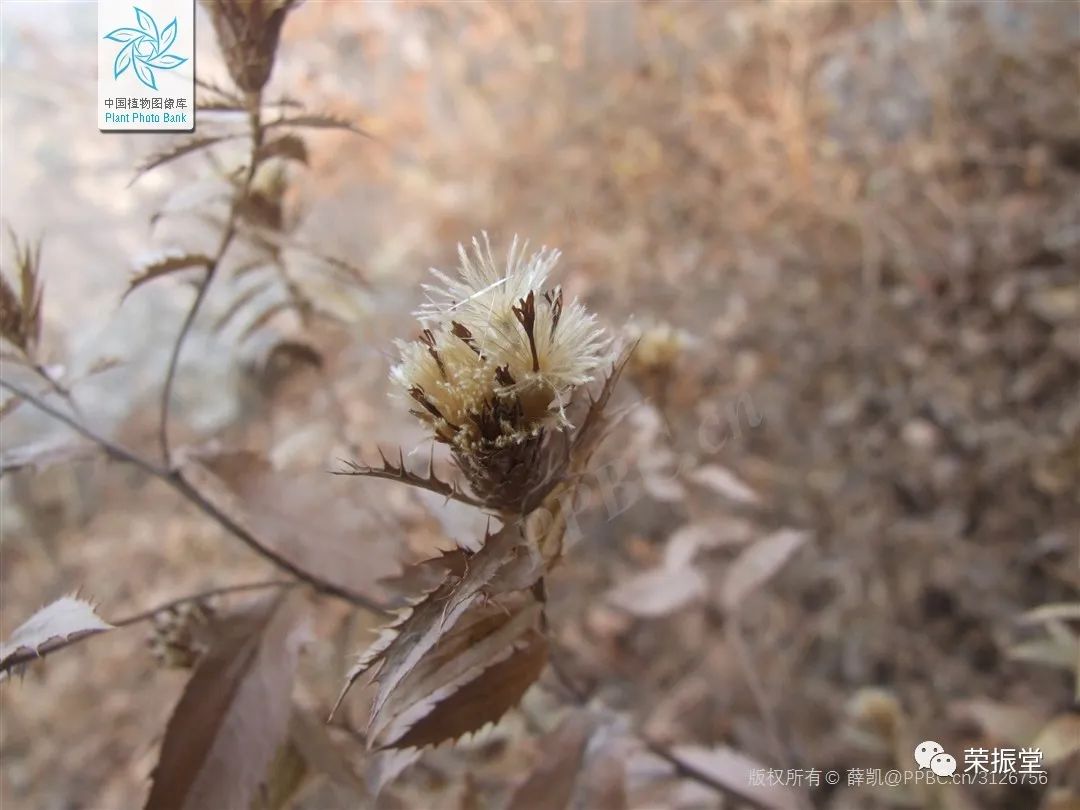
(Image from PPBC, Xue Kai photographed)
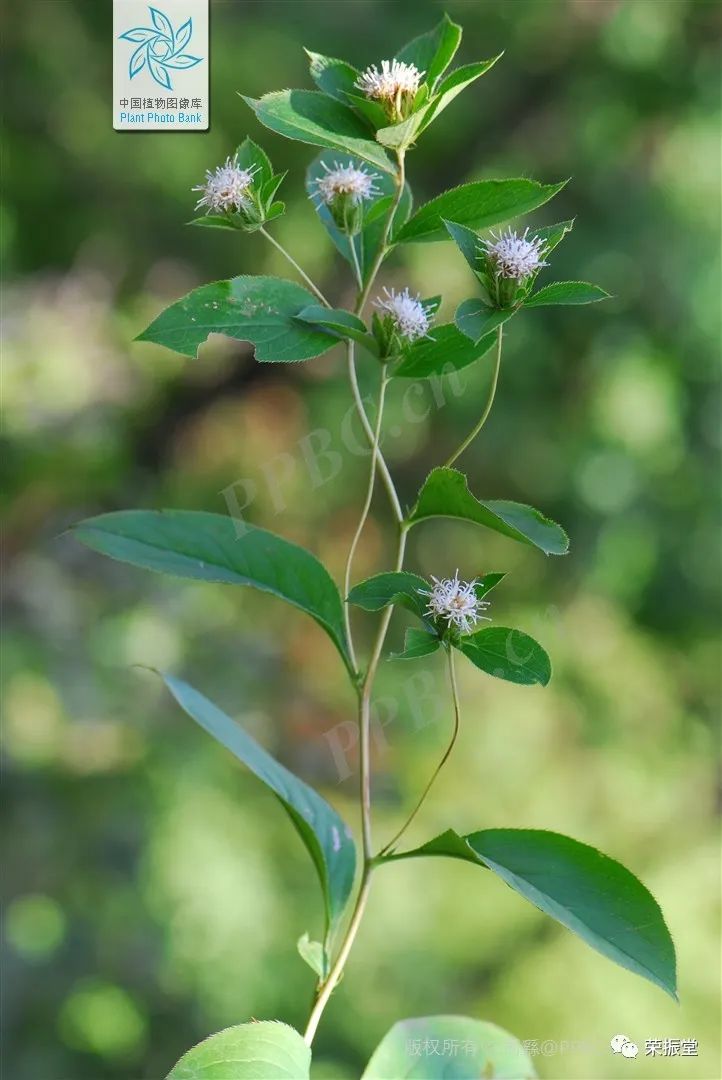
(Image from PPBC, Zhou Yao photographed)
The stem is erect, often purplish-red below or in the middle, unbranched or branched at the top, with sparse or no hairs on the entire stem. As it grows taller, the branches can produce buds at the same position as the leaves, indicating that the growth force of the stem is equally balanced.
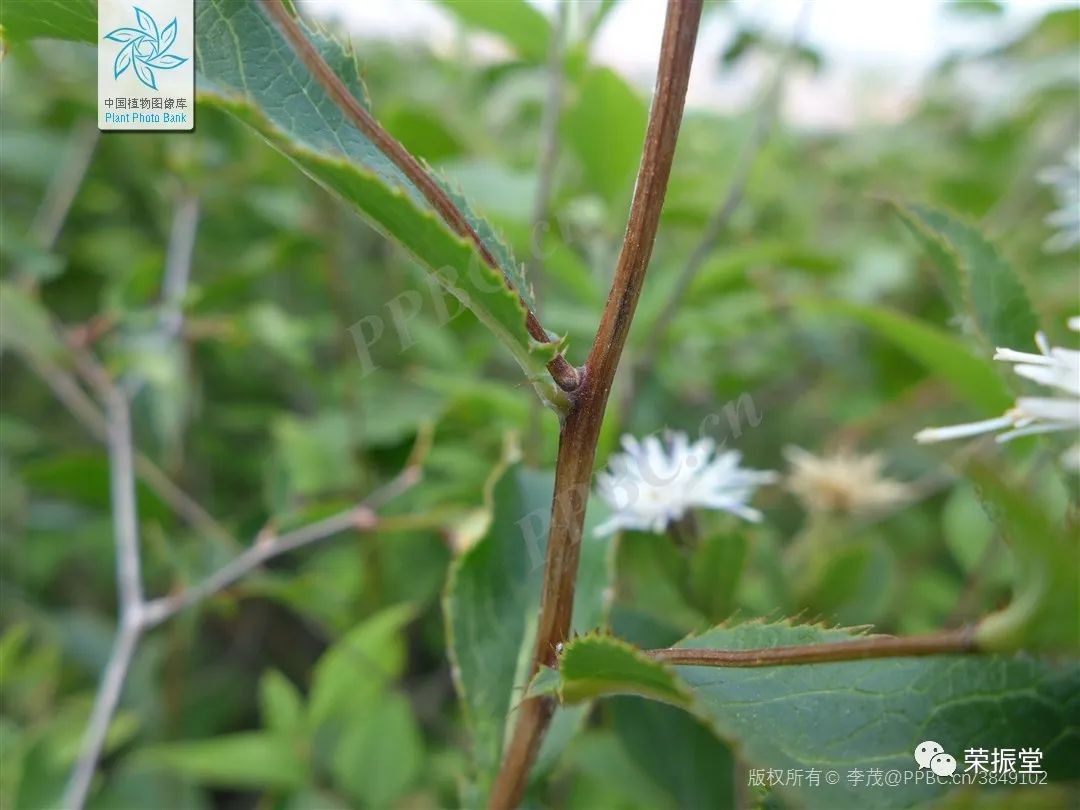
(Image from PPBC, Li Mao photographed)
The stem’s phloem supports the upright strength of the entire plant, and a longitudinal section reveals transparent green vascular bundles (for water transport), with no visible pith (which does not carry wood properties and serves a transformative function).
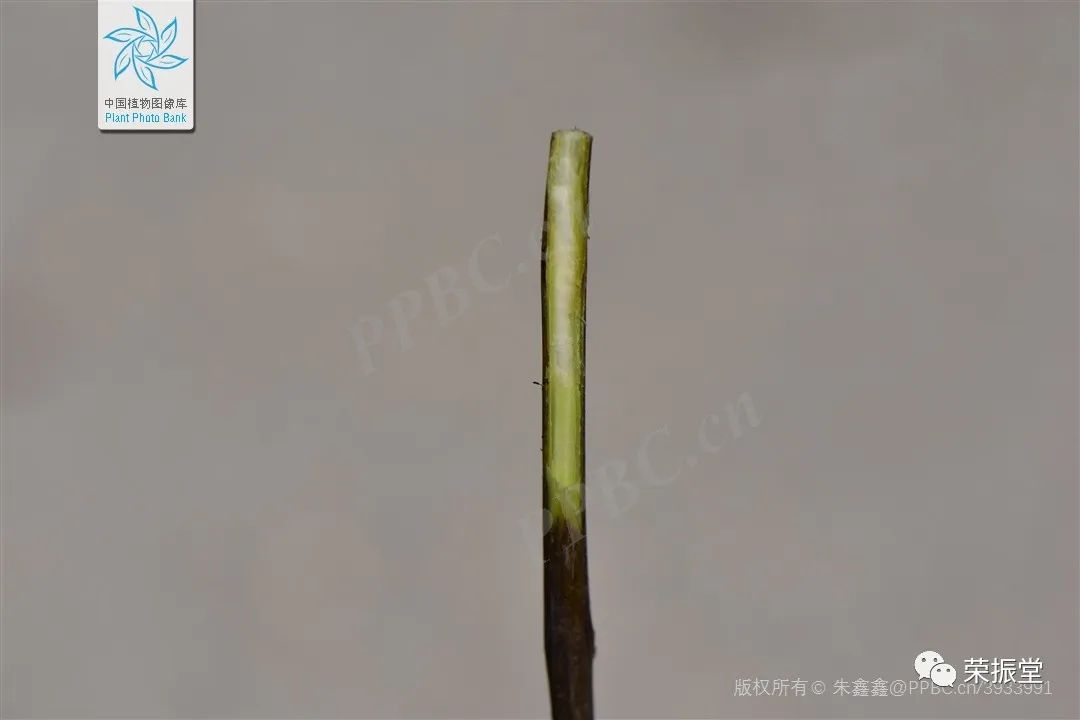
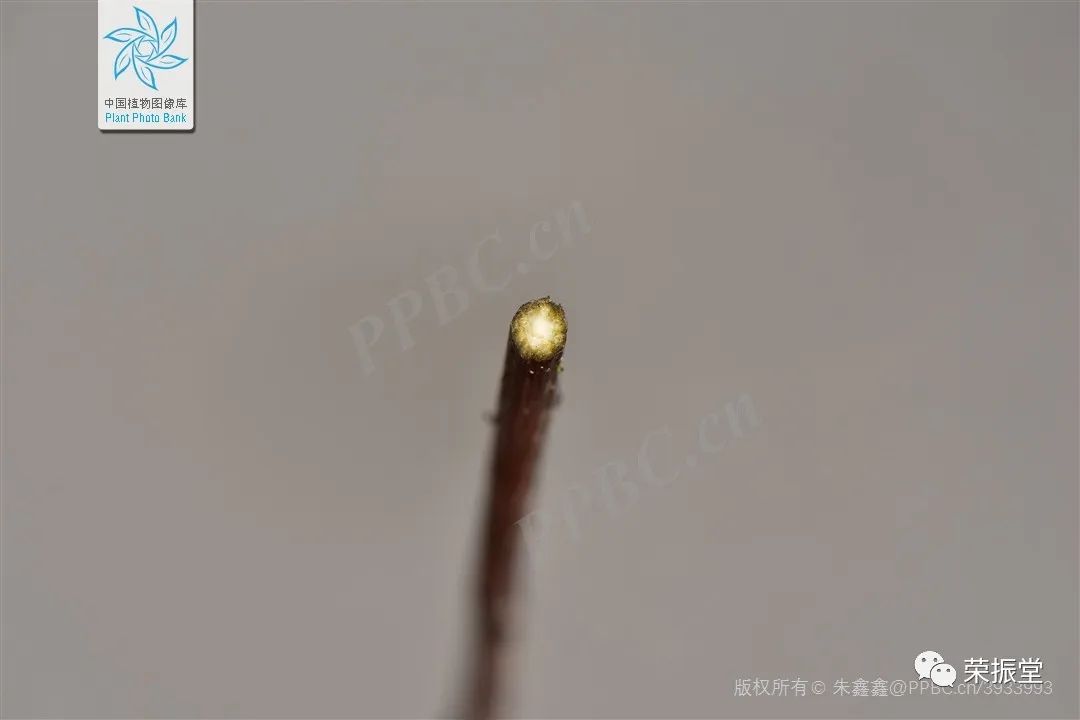
(Image from PPBC, Zhu Xinxin photographed)
The leaves of Cang Zhu are also polymorphic and have a hard texture, resembling hard cardboard. They are hairless, with needle-like or triangular serrated edges. The leaves represent the Xun position in the plant’s life cycle, with hard leaves serving to stop wind and enhance vibration; the sharp teeth symbolize breaking knots. They have a somewhat aloof appearance, reminiscent of a classical martial arts hero.
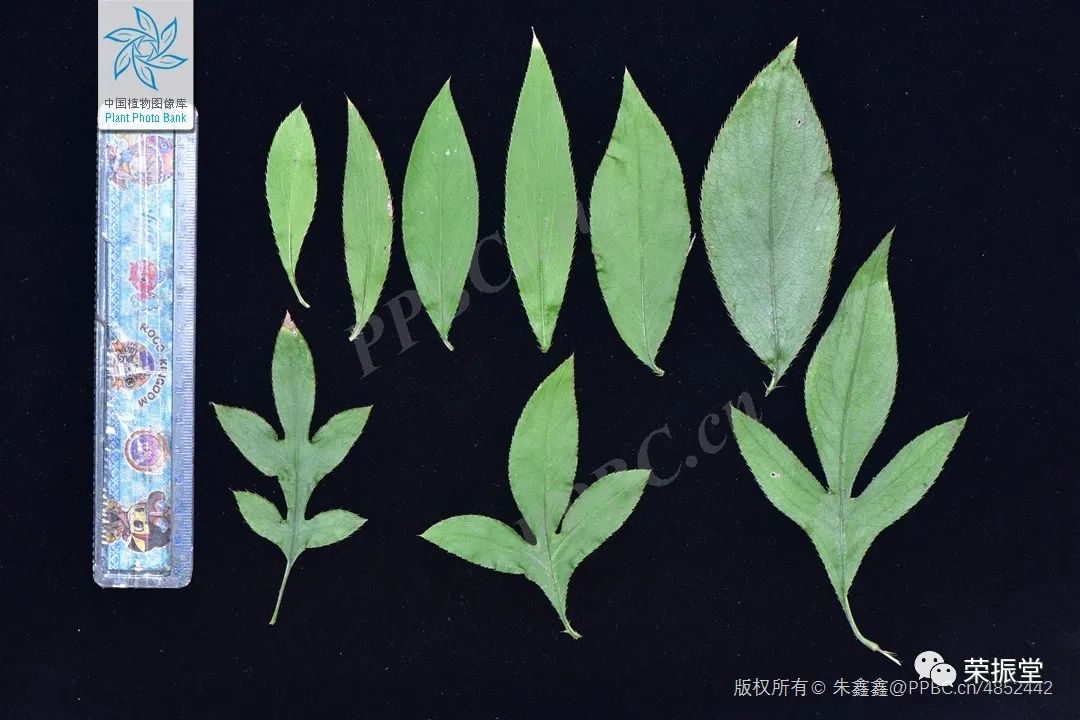

(Image from PPBC, Zhu Xinxin photographed)
The flowering and fruiting period is from June to October, with solitary flower heads at the top of the stem, but not forming a distinct floral arrangement. The same plant may have multiple or few (2-5) flower heads. This means that what appears to be a single “flower” is actually a cluster of many small flowers.
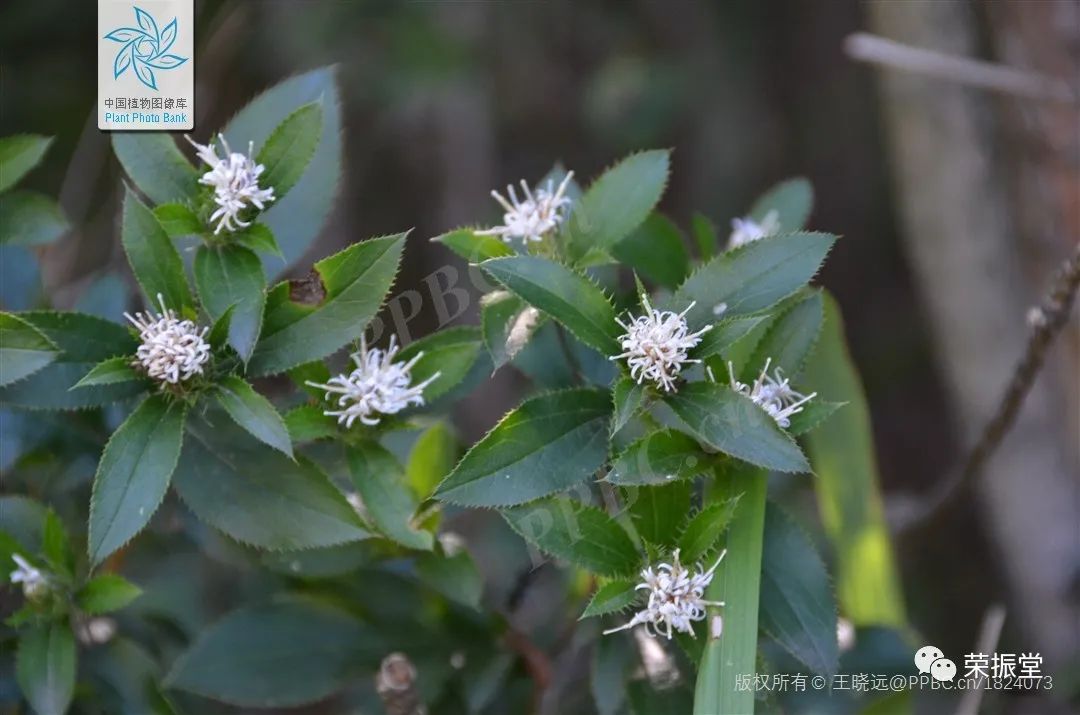
(Image from PPBC, Wang Xiaoyuan photographed)
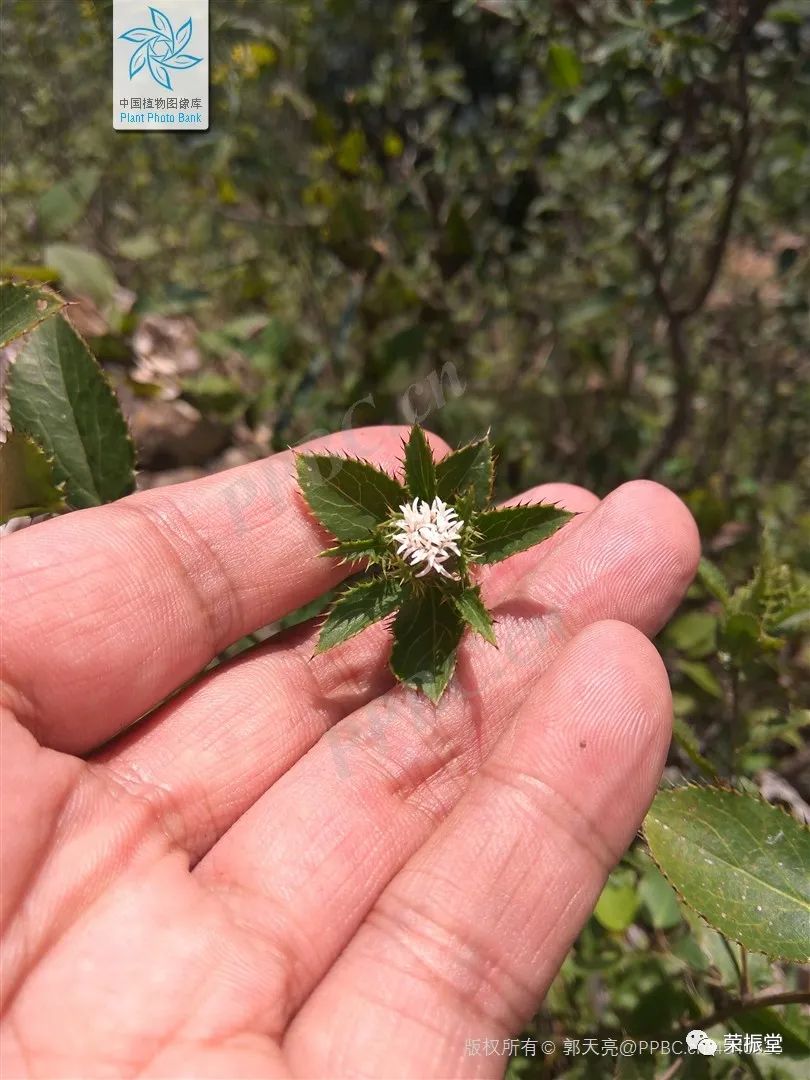
(Image from PPBC, Guo Tianliang photographed, showing the actual size of Cang Zhu flowers)
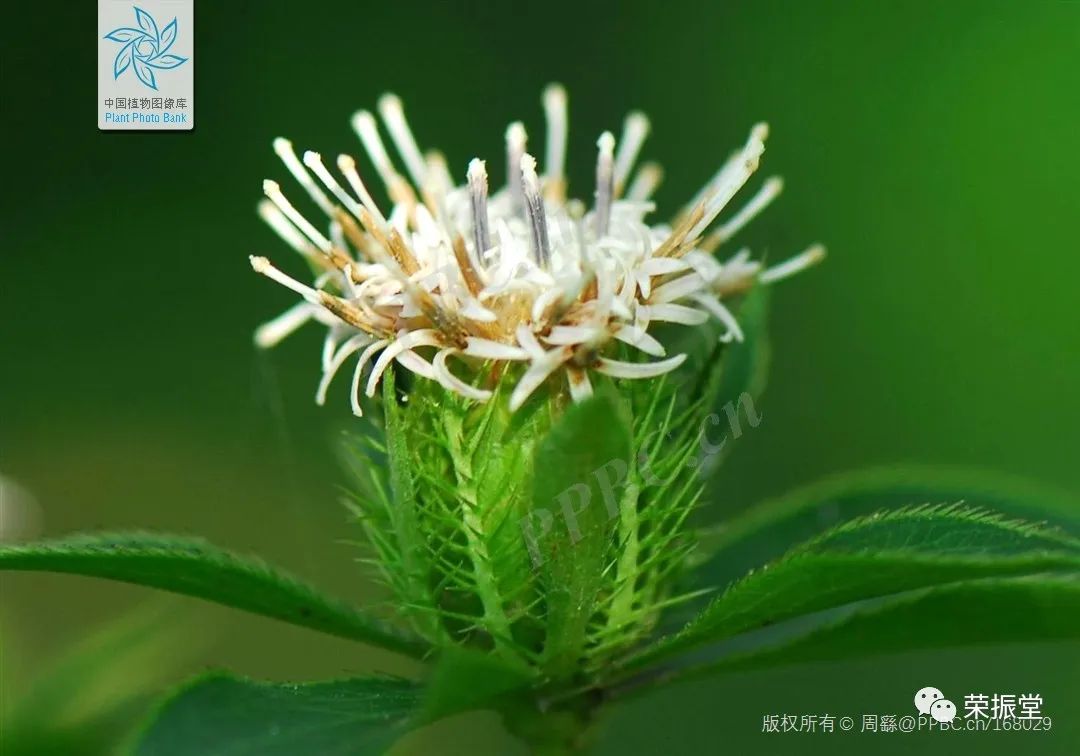
(Image from PPBC, Zhou Yao photographed)
The flowers are the plant’s expression and movement. Observing Cang Zhu flowers, it is interesting to note that the bracts surrounding the flower heads (which are needle-like and deeply lobed) give a sense of repulsion and arrangement; the flowers are white, with narrow petals, resembling the fine secretions in the human head and face, such as taste buds, olfactory receptors, ear secretions, and tear glands. The overall image of the Cang Zhu plant can stop here and promote the breaking of knots to restore secretion and sensory functions (if the flowers are used medicinally, this function becomes clearer).

(Image from PPBC, Zhu Renbin photographed)
After flowering, the fruit appears. The slender fruit of Cang Zhu is oval-shaped, covered with dense, straight, white hairs that sometimes become sparse. From the above perspective, they resemble “upside-down scallions” and have a resemblance to the “sword sheath” of the fruit of the Lulutong plant.
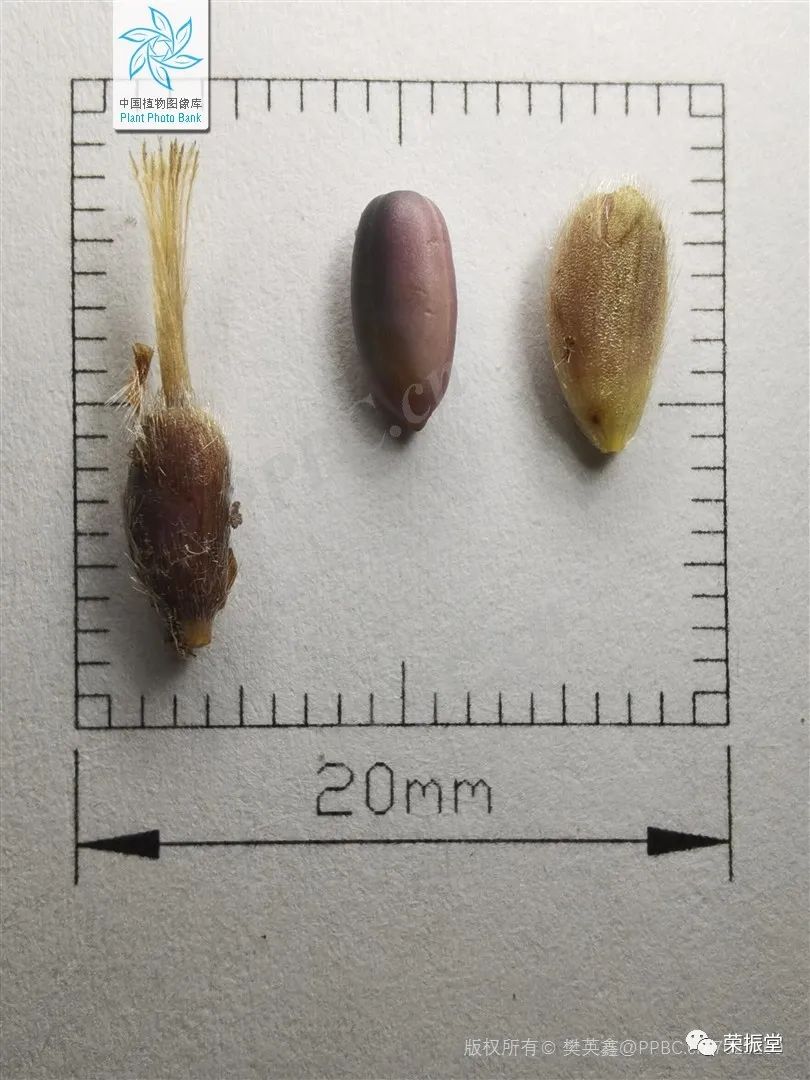
(Image from PPBC, Fan Yingxin photographed)
Peeling it reveals a layer of light yellow “raincoat”, with a yellow-orange feather “cape” behind it, which are seeds that automatically fall off with the wind when the flower and leaves dry (the outer layer represents the earth element). The slender fruit is without flesh (the earth is thin and heavy), and the fruit color is dark brown to black, symbolizing the entire plant’s dry and firm nature (the interaction of metal and water represents the beginning of life).
Looking back, let’s examine the root of Cang Zhu used in medicine. The main root stem is the “life foundation” that produces new shoots every year, growing in shallow soil (the earth element), with many fibrous roots extending downwards to capture nutrients and moisture, and it can also seek balance in deeper soil (the mountain element).

(Image from PPBC, Zhu Xinxin photographed)
The perennial root of Cang Zhu, although still elongated, forms clumps, resembling continuous “explosions”. This is related to the continuous growth and withering of the perennial above-ground parts; it does not resemble Aconitum, which “grows new and old”, but rather preserves its structure year after year, giving it a robust feel, while the inside remains white, resembling human growth, full of scars yet still youthful at heart.
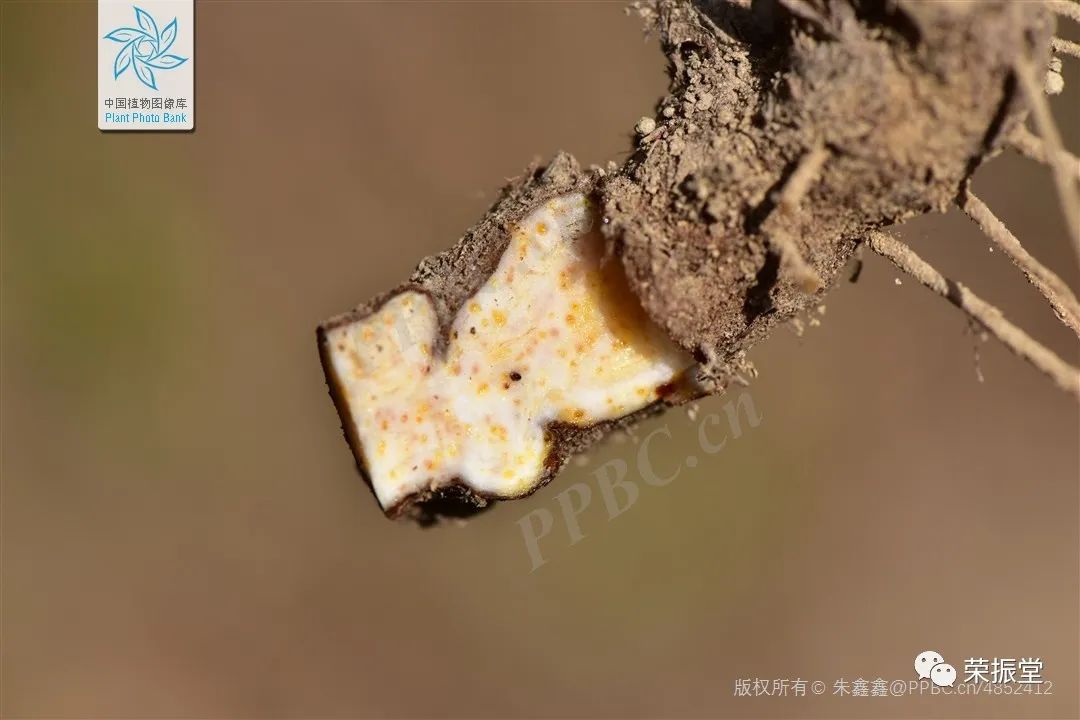
(Image from PPBC, Zhou Yao photographed)
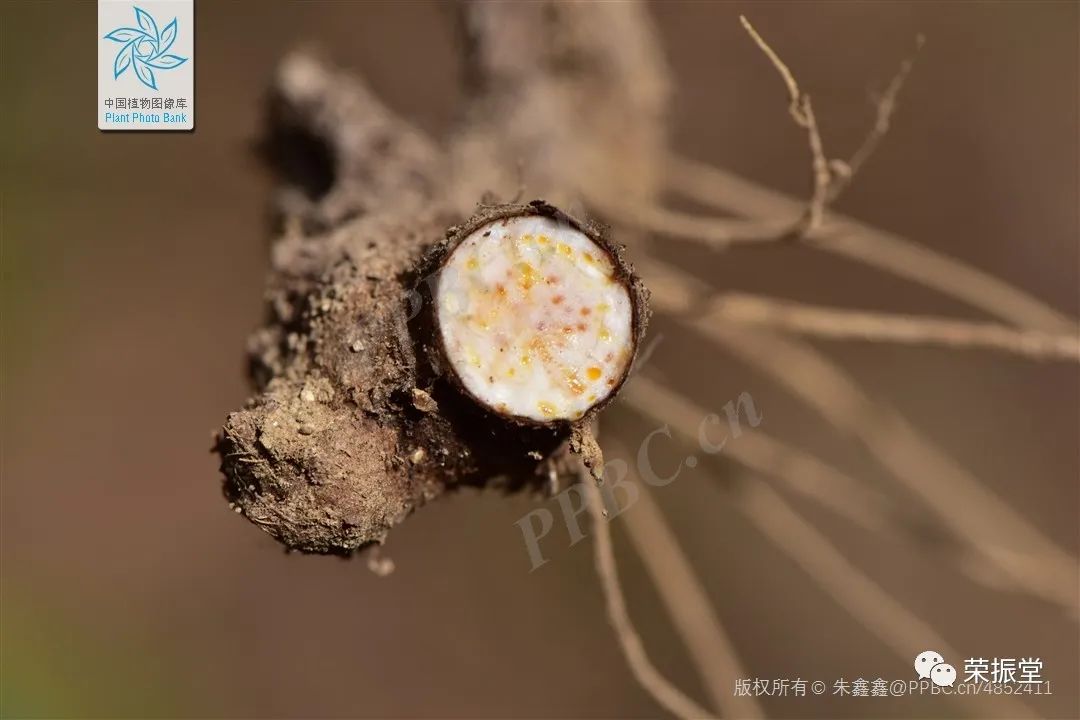
(Image from PPBC, Zhu Xinxin photographed)
The transverse section shows a white color, scattered with numerous orange-yellow or reddish-brown oil chambers (commonly known as vermilion spots). If exposed for a while, white needle-like crystals may be extracted. Generally, the perennial roots are preferred for medicinal use, but cultivators can harvest roots that are 2-3 years old. Roots are harvested from early September to early November or the following February to March (dried until 90% dry, then singed to remove fibrous roots, and dried until completely dry), with the best quality being firm, with many vermilion spots on the cross-section and a strong aroma.
The following image shows the appearance of the processed slices.
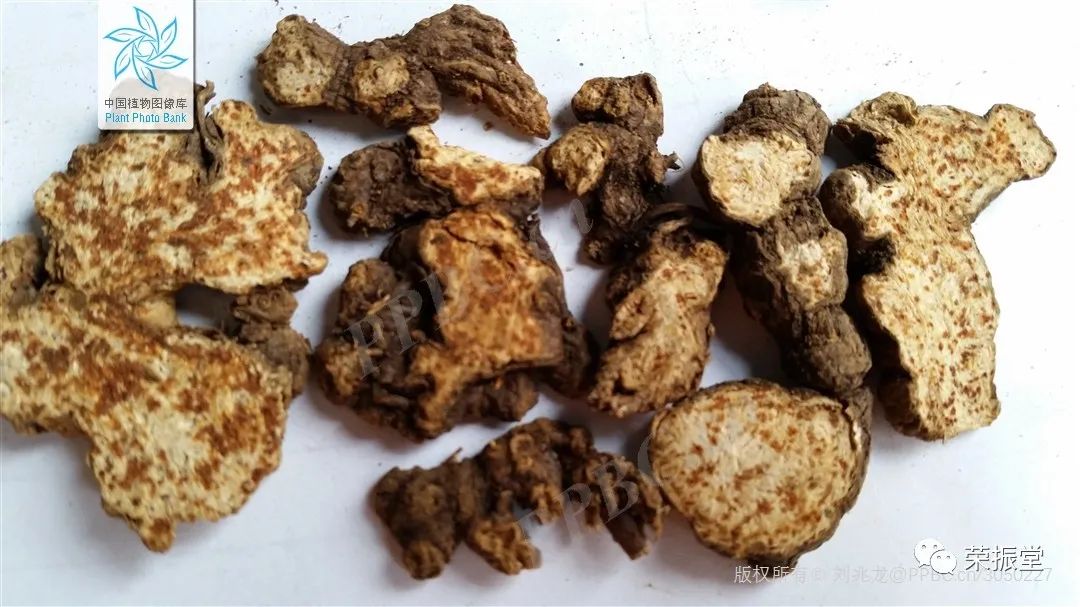
(Image from PPBC, Liu Zhaolong photographed)
In summary, the entire structure of the Cang Zhu plant retains water, while also transporting and dispersing moisture (it does not require much moisture, which is why it can grow in various environments in both northern and southern regions); its root is white with oil chambers, with a strong and spicy flavor, and a bitter taste that can be firm and dry, with a warm nature, all pointing towards its use for yang heat; it primarily acts on the earth element of the Spleen, thus strengthening the yang of the Spleen earth, and its ability to clear and break knots corresponds to the “spicy and bitter” properties; all derived from the blood of the earth element, it clears and breaks knots, ultimately reaching the secretion points of the head and face.
Selected Ancient Texts
OLD SAYING
From Lei Gong Pao Zhi Yao Xing Jie:Why is it called mountain essence? Can it promote longevity? It is because it gathers the essence of yin and yang.From Tang Ye Ben Cao:Cang Zhu has a unique robust energy, due to its soaking and fire roasting, it can induce sweating, and is distinct from Bai Zhu in stopping sweating; users should not confuse the two. Hai Zang states: Cang and Bai have differences in stopping and inducing.From Ben Cao Bei Yao:It supplements the Spleen, dries dampness, raises yang, and disperses stagnation, sweet, warm, and pungent. It dries the Stomach, strengthens the Spleen, induces sweating to eliminate dampness, and can raise the yang energy in the Stomach (Dong Yuan states: it robustly ascends, can eliminate dampness, and stabilize the Taiyin, preventing evil qi from entering the Spleen)… Dan Xi states: it solidifies the Spleen earth, dries Spleen dampness, indeed the root of phlegm treatment… dispels evil qi (dispelling all miasma, evil, and ghostly qi. In the hot and humid months, it is excellent for burning)… disperses wind, cold, and dampness, being a key medicine for treating atrophy (when the Yangming is deficient, the tendons become slack, leading to atrophy. Cang Zhu is a Yangming meridian herb).From Ben Cao Xin Bian:Cang Zhu cannot enter the Xuan Zhong, but it is good at moving through the large intestine to eliminate dampness, which is its specialty.
Note: The above ancient texts discuss the similarities and differences between Cang Zhu and Bai Zhu. As stated in Tang Ye Ben Cao, “Cang and Bai have differences in stopping and inducing” is a concise summary; further comparative content will be added when discussing Bai Zhu.
Cang Zhu’s robustness, supplementing the Spleen, drying dampness, raising yang, and dispersing stagnation, all align with the ecological characteristics. The mention of “dispelling evil qi” has been practiced in many TCM clinics since the pandemic, where Cang Zhu is burned for purification; its classification as a Yangming meridian herb relates to the root’s fibrous roots extending towards the mountain element, and the De Pei Ben Cao further supplements its use for treating atrophy.
Regarding the statement in Xin Bian that it “cannot enter the Xuan Zhong”, it means that when it reaches the Xuan Zhong, it enters the Yangming meridian and ascends to the head and face, not entering the lungs from the Xuan Zhong. And “moving through the large intestine to eliminate dampness” is a side effect of its function of strengthening the Spleen, drying dampness, regulating qi, breaking knots, and dispersing water.
From Lei Gong Pao Zhi Yao Xing Jie:It primarily regulates the Stomach, strengthens the Spleen, disperses stagnation, induces sweating to eliminate dampness, suppresses mountain qi, and disperses warm malaria.
From Feng Shi Jin Nang Mi Lu:Cang Zhu eliminates phlegm and knots, broadens the narrowness of the chest, treats wind on the body and face, wind dizziness, and headaches. It dispels mountain miasma, epidemic qi, warms the Stomach, calms the fetus, broadens the middle for eating, drives away phlegm and qi blocks, and stops abdominal distension and pain.
From Yi Xue Ru Men:It primarily treats wind, cold, dampness, and spasms, expels skin wind, and resolves water swelling… treats wind on the body and face, wind dizziness, tears, night blindness, and internal and external eye obstructions.
From De Pei Ben Cao:When combined with Shudi and Ganjiang, it treats pale complexion and poor appetite. When combined with Zhi Zi, it alleviates the dryness of Cang Zhu. When combined with Chuan Jiao and vinegar pills, it treats prolonged diarrhea. When combined with Chuan Bai, it treats atrophy (adding Niuxi is even better).
Note: The above ancient texts mainly discuss indications and usage, which can be referenced clinically. Among them, Yi Xue Ru Men mentions “wind, cold, dampness, and spasms, expelling skin wind and resolving water swelling”, indicating its potential effects.
The combinations mentioned in De Pei Ben Cao for treating “pale complexion and poor appetite”, “prolonged diarrhea”, and “atrophy” can be tried clinically; “Zhi Zi can alleviate the dryness of Cang Zhu” should be used based on the physician’s differentiation, as it can be a function or a counter-function, for clinical reference.
From Lei Gong Pao Zhi Yao Xing Jie:Common practitioners often ignore its drying properties and do not use it regularly, not knowing that the Spleen is the organ that prefers dryness; there has never been a case of a healthy Spleen suffering damage from dryness, only those with fiery dryness and Spleen deficiency who may be cautious of it, fearing it may increase their fire.
From Ben Cao Bei Yao:Those with excessive sweating should avoid it.
From Feng Shi Jin Nang Mi Lu:However, it is too drying and should not be used excessively, especially in cases of bloating and distension, it is particularly prohibited. It can be used for burning smoke to dispel improper qi, but should not be used regularly, as it may also cause dryness. Note: Cang Zhu is a key herb for those with dampness and phlegm, pungent and warm to dispel evil, receiving the righteous qi of heaven and earth, but those with yin deficiency should avoid it due to dryness and thirst.
From Gu Songyuan Yi Jing:Those without dampness should avoid it.
From Ben Cao Xin Bian:Cang Zhu can dispel evil, but should not be used to supplement righteousness.
From De Pei Ben Cao:Fang Feng and Di Yu are its assistants. Avoid peaches, plums, sparrow meat, cabbage, and blue fish.
From Ben Cao Hai Li:Pungent, warm, and drying, it should be avoided by those with excessive sweating and constipation.
Note: Herbs with many contraindications have significant effects and are widely used. In summary, “excessive fire, dryness, and absence of dampness” should avoid Cang Zhu; it is important to inform patients about contraindications when using formulas where Cang Zhu is the main herb, avoiding peaches, plums, sparrow meat, cabbage, and blue fish.
Fang Feng and Di Yu are used as they have similar effects.
For previous summaries, please click the link below:
A Detailed Discussion on Traditional Chinese Medicine: Summary of Heat-Clearing and Detoxifying Herbs (Hexagram Position)
A Detailed Discussion on Traditional Chinese Medicine: Summary of Heat-Clearing and Drying Herbs
A Detailed Discussion on Traditional Chinese Medicine: Summary of Heat-Clearing and Fire-Draining Herbs (Hexagram Position)
A Detailed Discussion on Traditional Chinese Medicine: Summary of Exterior-Releasing and Cold-Dissipating Herbs
A Detailed Discussion on Traditional Chinese Medicine: Summary of Wind-Dispersing and Heat-Draining Herbs (Bagua)
A Detailed Discussion on Traditional Chinese Medicine: Summary of Heat-Clearing and Blood-Cooling Herbs (Bagua)
A Detailed Discussion on Traditional Chinese Medicine: Summary of Heat-Clearing and Deficiency-Heat Herbs (Bagua)
A Detailed Discussion on Traditional Chinese Medicine: Summary of Laxative Herbs (Bagua)A Detailed Discussion on Traditional Chinese Medicine: Summary of Wind-Dissipating and Cold-Dampness-Removing Herbs (Position)
A Detailed Discussion on Traditional Chinese Medicine: Summary of Wind-Dampness-Heat-Removing Herbs (Position)
A Detailed Discussion on Traditional Chinese Medicine: Summary of Wind-Dampness-Strengthening and Bone-Strengthening Herbs (Position)
Currently discussing “Dampness-Transforming Herbs”:
A Detailed Discussion on Traditional Chinese Medicine: Huo Xiang – Rapidly Transmitting Water Dampness Upwards, Entering Qi and Nutrient to Dispelling Evil (Revised)
A Detailed Discussion on Traditional Chinese Medicine: Guang Huo Xiang – Rich Aroma Dispelling Yin Haze, Suitable for Both Xun and Dui
A Detailed Discussion on Traditional Chinese Medicine: Pei Lan – Subcutaneous Spleen and Stomach Water Phlegm Driving, Dispersing Fillings in Blood Disorders
Scattered Discussions:
-
A Detailed Discussion on Traditional Chinese Medicine: Sang Shen Zi – Sweet and Sour, Nourishing the Five Organs Essence, Generating Fluids and Thickening the Intestines, Reducing Spleen Heat
-
A Detailed Discussion on Traditional Chinese Medicine: Mao Zhao Cao – Sweet and Spicy, Gathering Yang and Breaking Knots, Standing Firm in the Perineum to Collect Lymph

